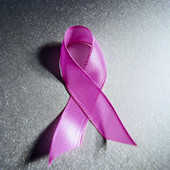
THURSDAY, April 25 (HealthDay News) — A delay in breast cancer treatment shortens young women’s survival time, especially if they are black or Hispanic, have no insurance or are low-income, a new study indicates.
“A delay does influence the outcome, which is survival,” said researcher Hoda Anton-Culver, chair of epidemiology at the University of California, Irvine.
A treatment delay time of more than six weeks affected survival at the five-year mark, she found. Overall, 90 percent of women treated less than two weeks after their diagnosis were alive five years later, but that was the case for only 80 percent of those whose treatment began more than six weeks after the diagnosis.
Hispanic and black women, compared to white women, were more likely to have a treatment delay. So were low-income women; as well as those with public or no insurance, compared to those with private insurance.
In a separate study, researchers found that women on Medicaid, the insurance plan for low-income patients, have larger breast tumors at diagnosis compared to women who had private insurance. Women on Medicaid were more likely to be treated with mastectomy for large tumors compared to women with private insurance, the study also found.
Both studies were published online April 24 in JAMA Surgery.
Anton-Culver and her colleagues evaluated the records of nearly 9,000 teens and young adults, aged 15 to 39, with breast cancer, who were in the California Cancer Registry database. They were diagnosed from 1997 to 2006.
Hispanic and black women were almost twice as likely as white women to have a treatment delay of more than six weeks. Low-income women and those with public or no insurance were nearly twice as likely to wait more than six weeks for treatment, compared to those who were higher income or who had private insurance.
The 10-percent survival difference found in women who had a long treatment delay is substantial, Anton-Culver said. “Losing 10 percent of women in that age group is a big loss,” she said. Before the cancer, their life expectancy was decades more.
Delays in treatment may have many reasons, she said. Minority women and those who don’t have as much access to health care may simply have trouble getting to the doctor in a timely manner.
For their part, higher-income women may be juggling career and family obligations and think the delay will not affect them, Anton-Culver said. She tells them: “The cancer is not going to be put on hold until you organize yourself.”
“What we are saying in this paper is that you can’t say, ‘OK, I have breast cancer but I have to do a, b and c first, then I will pay attention to that.'”
In the second study, researchers from the University of Toledo Medial Center, in Ohio, evaluated more than 1,500 women diagnosed with stage 1 through stage 3 invasive breast cancer. All had surgery between 1996 and 2009. Of those, 42 percent had a mastectomy and 58 percent had breast-conserving surgery such as a lumpectomy.
Overall, those on Medicaid were more likely to get a mastectomy — 60 percent compared with 39 percent.
Early detection efforts, including increasing the rate of screening mammograms among those on Medicaid, could help more women get breast-conserving surgery, the researchers said.
An expert who was not involved with the study agreed.
“Increasing screening programs for underinsured patients might help reduce this disparity in care,” said Dr. Laura Kruper, director of the Cooper-Finkel Women’s Health Center and co-director of the breast oncology program at the City of Hope Cancer Center, in Duarte, Calif.
The study has limitations, she said. “We don’t know what the delay is between feeling something [such as a lump] and getting a diagnosis.” Part of the delay may be postponing a doctor visit because the women is in denial, doesn’t have access to care or other reasons, Kruper explained.
“Women who are lower socioeconomic status don’t always have someone to watch their kids when they go in for an appointment,” she said.
Fixing the disparities is not easy, Kruper said. Educating women about the need for screening and for prompt treatment is complex. “There is not one single approach that will work for all patients,” she said. The solutions must take into account educational differences, language barriers and cultural differences, among other things, Kruper said.
More information
To learn more about breast cancer, visit the American Cancer Society.

